
|   |

|   |
Modern Indian dance - Ashish Mohan Khokar e-mail: khokar1960@gmail.com Photos courtesy: Ashish Mohan Khokar August 31, 2014 The Oxford Dictionary describes modern as: Contradistinction to classical/tradition; of the present times, just now, existing, pertaining to the present and recent times, contrasting to an earlier form. In any field - design, architecture, films, music - modern means a new language, which is distinguishable from old, something new and something that holds as modern. In Indian dance this is very complex and often the most misunderstood word. What part is modern and what part is Indian? Is fusion leading to confusion? Are traditions being sacrificed for something western? Are non-government funding agencies and journalism teaching schools, subverting Indian classical traditions just to pander to western powers or next trip to Germany or Guyana? Presently, Indian modern dance or modern dance in India is neither Indian nor modern. Using traditional forms like Kalari and Chhau, adding western costumes and music does not make it modern. Modern means a whole new language, which appeals and is understandable. Not just decorative dance as many dance groups are trying to do. New does not mean modern though modern can be new. Newness is in structure and substance of art, in its content. Modern is often mistaken for contemporary. Contemporary dance is a reflection of a society at a given point in time. Every generation has a contemporary response to everything: fashion, film, design, dance, music, painting but it does not necessarily mean it is modern. Modern dance in West arose in America as response to strictures of western classical ballet. This arose out of historical and sociological reasons. America was a new country and needed new symbols and statements. It was also a way of breaking from its European past. The Courts of France and England, Russia and Spain promoted classical ballet. America slowly created a new language that broke with past traditions and added to present. In music it was jazz, in dance it was modern. While this was happening in USA in 1930s, an Indian by chance made inroads into modern Indian dance. The first truly "modern" dancer of India was Uday Shankar (1900-77). He had no clue about dance, Indian or western, was sent to London by his aristocratic family to train to be a painter, did not care much for that and by default, became a dancer, a great one at that and a very modern one for his times. What was modern about his dance? It was a break from past in themes, language, structure. It was discernible, hence understandable. It was fun, appealing and appreciated. It gave old stories a new twist. He understood the art of presentation, eschewed stretching beyond tolerable limits and had a keen ear for music, an eye for beauty in costumes and women who danced with him. In short, Dada of dance, Uday Shankar was a complete artiste, if ever there was one in India. He himself did not know that, and his modesty remained his best jewel. He was our national treasure, a master showman. It was in Paris in 1930s that Uday Shankar had to dance in cafes and cabarets, dressed up as a nautch girl or Rajput Bride. This was because, as a dancer he was unknown and the only way he could survive in Paris, was to do these bit roles. That nothing is wasted in life paradigm came true and he was spotted by no less a ballerina than Anna Pavlova herself and paired in the small Indian or oriental cameos Radha Krishna. Uday Shankar partnered Pavlova and rest is history. 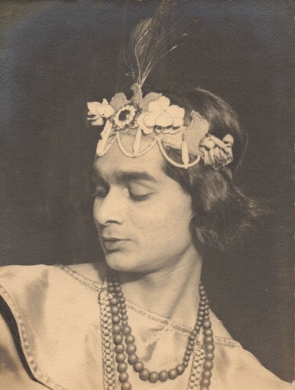 Uday Shankar 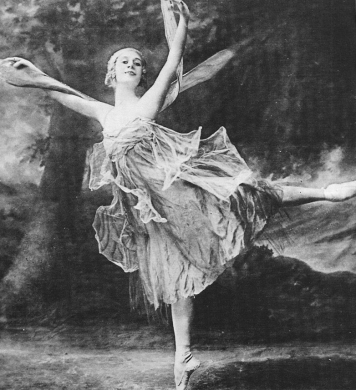 Anna Pavlova He toured with her and soon created his own tour by coming back to India and collecting instruments, musicians (like Allaudin Khan sahib, Vishnudas Shirali) and dancers like Simkie, the French beauty who was closest to him for long; Zohra Segal of Rampur, Coomalata Banerjee, his cousin and his wife to be, Amala. Armed with a huge group, he went to Europe and USA and conquered the west. He did so with his dance and this was what made it unique for his times. His productions gave a scent of India, its flavours, colours, costumes and dances. At that point, no one really knew Indian dances. Foreigners who had come to India looked for Oriental themes, the 'Cobra' and 'Hindoo wedding' dance types. Ram Gopal stayed away from such display and learnt and performed only classical styles like Bharatanatyam, Kathakali and Kathak. It was left to Uday Shankar to create from existing milieu, an entirely new form called Indian ballet or modern dance. The movements were Indian, the themes were Indian, the music was Indian and the dancers and dances were Indian. Many were inspired by him, many cloned him but he remained an original. Bhaskar Roy Chowdhury, Yog Sunder, Gopalkrishna, all emulated him. Fast forward to circa 2012 and what do we have? A mish mash of ideas, badly executed, poorly performed and horribly caricatured. A leg of Bharatanatyam, spins of Kathak, costumes of ballet or designers gone real wrong! Mouthing mealy themes like Environment, Empowerment and other such fashionable, current global issues, these half-baked dancers and choreographers wreak havoc on stage in name of modern dance. After Uday Shankar's reign till 1970s, there arose his disciples like Sachin Shankar and Narendra Sharma doing reasonably decent work and very simple, effective Indian themes like 'Train', 'Shringar', 'Man and Masks' and such other new themes. This was "modern" for them then. The idea of breaking away thematically from mythological lores Indian dances were so moulded after, and creating new fodder or material itself was modern. Santosh Nair follows this path set by his teacher Narendra Sharma. Execution was modern too, in terms of simplified costumes (all gold crowns and armlets and dhotis were done away with and just pants or t-shirts or simplified salwars were the main costume; a certain paring down of sense and sensibilities), music was non classical and on the whole the evening's look was contemporary. They called it "ballet" after western trends and soon a new word was coined: contemporary. We Indians are very good with coining words without understanding its import or meaning. 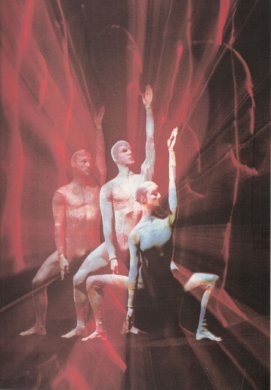 Modern 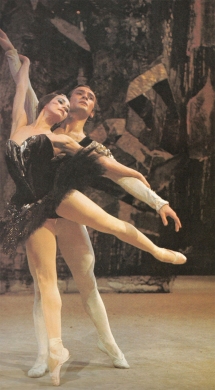 Ballet Anything can have a contemporary response: Fashion, shoes, hairstyles, design, buildings, cars. Modern is different. Modern means a whole new language is structured, like in western dance or music. What jazz did to music, modern dance did for dance. Modern dance meant a break with classical ballet (Bolshoi types), a break with classical stuff. In Indian dance, definition being as many as there are proponents (or 5 blind men and the elephant story) the new dances all got lost in words no one knew or understood. End result was: anything goes on stage as one sees now! What does one see now? A group first finds for itself a good sounding name like Tantra, Mantra or Yantra. Or, in typical Indian fashion, jugaad style, some Sanskrit word will be broken in half and nritta added to leg! Many such groups abound and what do they present to gullible and unsuspecting audiences? A mish mash, hilsa parantha! Neither edible, nor tasty. Uday Shankar's student Narendra Shrama was lucky when he came on the scene. There was no competition in Delhi, he being the lone ranger as Uday Shankar's best disciples were either in Bombay (Sachin Shankar) or in Kolkata (Amala and Mamata Shankar). Shanti Bardhan and his associate Gul and Prabhat settled in no man's land those days, a place called Gwalior (then moved to Bhopal for patronage. As Kalidas said, "Creepers and artists need support.") Shekharan Paniker was the only one doing ballet-type choreography for mythological productions, having learnt under Guru Gopinath. Yog Sunder did mish mash of folk, film and popular dances, never making a mark in serious choreography. Delhi and Bombay also benefitted from interventions and interferences from foreigners like Georg Lechner, then director of Mumbai Max Muller Bhavan, who mounted an East West Encounter (the title sounds like dacoits or gangsters ambushing!) in the mid eighties. In order to promote German dancers later, who were far ahead in modern trends having had experience in modern techniques in Europe, he platformed some and included those Indian dancers who had not been successful as soloists in their careers till then. A Bharatanatyam dancer called Chandralekha, who bleached her hair white to stand out in a crowd and Kathak talent Kumudini Lakhia, who wanted to go beyond traditional amad-uthan-tatkar mode of Kathak. It was however in 1976, under Sangeet Natak Akademi's baton, that a first national forum and discussion took place in what was CONTEMPORARY Dance. A 5 day festival, featuring 10 or more choreographers and their works were platformed. Among these were all oldies like Prabhat Ganguli (now dead but then living with Gul Bardhan) from Gwalior-Bhopal; Sachin Shankar (Bombay); Narendra Sharma, Shekharan Panikar, Yog Sunder (all from Delhi); Nataraj-Shakuntala from Madras, Mrinalini Sarabhai and Kumudini Lakhia from Ahmedabad. All of them showcased their art and serious discussion took place under Mohan Khokar's stewardship of the Akademi. Those not included in this felt left out and a decade later mounted and created their own East West Encounter in 1984. The East West Encounter gave an impetus to modern search and while this model remained largely German and only Chandralekha's career got enhanced from being an unknown Bharatanatyam dancer of little merit to becoming somebody in creative, contemporary dance field, others carried on as before. Chandralekha did try hard and came up with everlasting works in her initial years: 'Navarasa' with Kamadeva, the excellent Kuchipudi dancer and 'Sri', a production on Women's Rights. Chandra used Bharatanatyam, then abused it by saying it offered precious little! She used the same tillana and alarippu, albeit in group format and while mouthing anti Bharatanatyam sentiments, she still availed of its structure and benefitted from it. Modern Indian dancers have suffered from a certain hypocritical stance, largely to sound different and to please their western masters. This trend and discourse continues even now. We see acolytes and associates of Chandra debunking all classical dances and last century of dance writing, saying it used words like scintillating. Attempts to later place Chandra on same pedestal as Pina Bausch proved that the whole issue was stage managed. With her, this 'style' died. She wanted no students, no followers, no school. Her art, like all greats, started and finished with her. While Chandra and Kumudini carried on seriously and sincerely in whatever they believed to be modern dance, even if still using traditional dances like Chhau, Kalari, Kathak and Bharatanatyam, one dark horse who crept in slowly and won over the race and went miles ahead was Daksha Sheth. Trained in Kathak by Kumudini Lakhia and further by Krishna Chandra Naik in Mayurbhanj Chhau, she worked quietly away from arc lights and fame and created serious works of everlasting depth. All her productions show newness: 'Summer' was first in 1986 set to Vivaldi's famous music and just by simple twists and turns one could discern her genius in dance vocabulary. First lesson: modern dance is about a new language, not just new jargon. Daksha Sheth proves this abundantly. All her works since then have newness, no repetition of even idea or style and leave lasting impressions, worldwide. 'Search for My Tongue', ' Malkhamb' and many more followed and beauty was Daksha was discovering Indian lost traditions like street art of Malkhamb of Maharashtra and she gave it new life. Content remained Indian and form, its presentation, its appeal was modern. After Uday Shankar, Daksha Sheth remains first and last genius of modern dance in India. 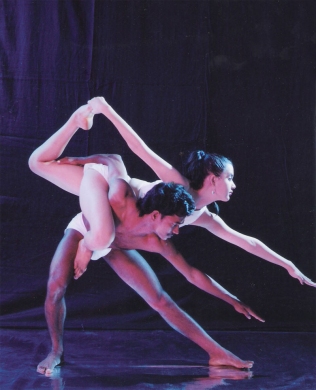 Daksha Sheth Dance Company 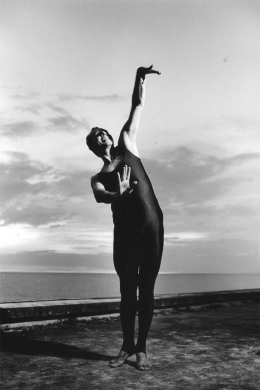 Astad Deboo India's pioneering modern dancer Uttara Asha Coorlawala, rode the scene in late sixties and until she settled in mid seventies in USA remained a reference point of what was new and excellent in Indian dance. Uttara can truly be hailed as first real modern dancer of India. Nothing about her dance was traditional Indian and everything was modern, especially delivery, language and style. Others have tried to do something meaningful like Astad Deboo. Astad has taken the form further with his own absorption of world cultures. He brings to dance a certain solitude, a quiet sensibility. His movements are slow now, partly because of a style he has created. To do dance in very slow pace is far more taxing than doing in a flurry. His costumes, his art shows maturity of form. His dance is modern in language yet its structure and themes and content is Indian. Like Daksha, he has found the kernel of what can be modern Indian dance. Madhu Nataraj of Bangalore has used her exposure to Kathak to mount works as vast as Manipuri based 'Moh' to Japanese influences and Scottish. She and her group STEM (Space Time Energy Movement) are amongst the few who can dance to Chopin's music or Charulata's. Madhu brings in modern sensibilities to traditional Kathak. Leaps and paltas dominate her signature works. She is also amongst the few who teaches aesthetics and choreography, as her mother the veteran guru Maya Rao was India's first properly trained choreographer in USSR in 1960s. Kolkata groups have a unique place. In absence of any classical form Bengal can call its own, Kolkata has shown increased predilection towards modern or contemporary dances, starting with its genius of Uday Shankar. But like dining out of Dada Tagore's contribution for long, Bengal has dined out of Dada Shankar's contribution in modern dance for long. Only Mamata Shankar, his daughter and film actress in her own right, can claim to be closest to his style and substance. Tanushree Shankar tries to keep that style alive, but most other groups are either substandard or pathetic or both. Many suffer from excessive mannerisms, borrowed from TV or films. Costumes are pretty-polly types and music is western. Most Indian dancers mistake western music to mean modern India dance! Nritarutya, a quiet group from Bangalore, is making waves for ushering in new sensibilities with works like 'Ardhanariswara', 'Chitara' and 'Men are from Mars'. They have understood the core of modern dance while remaining Indian. They are evolving, like Daksha, a language that has structure and style, substance and sensibility. Two sisters, Mayuri and Madhuri Upadhya are the main dancers and choreographers and in each work scene there is freshness of form and depiction with dedication. Clearly Nritarutya is a group to watch. What's happened in modern dance is also what's happening in TV and films. Often now, gymnastics have replaced dancing and group dances are popular. So most ordinary youngsters mistake gymnastics and gyrations to mean modern dance. This trend has come about for many reasons: most people don't have time to learn any one Indian classical form seriously and most film stars too are jack of all, master of none (except a few like Hrithik Roshan, Prabhudeva who can dance). Stars are so busy promoting films (to survive in the market) that they have no time to learn basic dancing; horse riding, swimming, all skills earlier mandatory to act! Now, computer graphics can make a skinny SRK look like a cousin of Sylvester Stallone! A la Ra One. Matrix and its models can go take a ride, we are here to recreate them on screen. Madras remains traditional and has very little to offer in modern dance. Narendra Kumar tries his hand to do some type of modern dance but end result is Bharatanatyam. No matter how much they wish to escape and go far, they can't. It's in their DNA, this Bharatanatyam ... Legs bend at knee automatically; exaggerated Kathakali gestures come in and lo and behold, a modern dance production looks like some same old Bharatanatyam production. Anita Ratnam does dance-theatre, with heavy emphasis on costumes that look rich, music that sounds detailed and dance that's minimal. Attakkalari of Bangalore, handsomely funded by Tatas and IFA type of funding agencies is trying to find a path, though heavy western influence and sensibilities don't make it look like they have anything uniquely Indian to offer yet. Smattering of training in Kalari or Kathakali does not necessarily lead to anything exceptionally modern. Dependence on technology and stage props shows. Small town India follows big brother, the metros. Mysore has some Vande Mataram number going on without a by-your- leave to composer-singer A.R. Rahman. Themes are predictable and stuff similar. Chandigarh, Kanpur, Kochi - Modern dance means film sequences at best, some hashed up Indian styles at worst. What then is the answer to all this? Long ago, in the mid 70s, it was mooted by central government that a National School of Choreography, on lines of National School of Drama be set up. The idea was discussed but who would lead? All wanted to take that role! Without having the experience or exposure...naturally like all good things Indian, the idea died and never took off. We Indians are too individualistic and can rarely work in teams in most spheres of our social endeavours. Where does modern dance stand today? At crossroads. It is hardly modern, save a few who have really understood it like Daksha Sheth and Upadhya sisters. Others are blindly copying each other, when not copying from west. Music remains a core issue. Either borrowed or stolen, most mistake western music score in dance to mean their dance is modern. Two, themes and structure are shabby. Of course, youngsters have such short attention spans that anything over 3 minutes taxes their patience these days. Sponsors are to be blamed too. They clearly say: please do modern dance. Without training or background, a dancer that has learnt a smattering of one or more classical styles then tries to find three or more compatriots who can move a leg too. They then become a group. They call it some new fangled name. Then they think what's best to do on borrowed music, costumes, time and money. End result: shoddy dance. Not modern. Or dance! Solution? Sponsors should take pride in Indian things because most of their monies and earnings (in business) come from Indian soil. Even if they want modern, sponsors should welcome Indianness in dance. They should let groups develop over period of time and support such on continuous basis, so financial security is granted to do creative work. An average dancer has no financial means to sustain one show leave alone a lifestyle. A sponsor should adopt a group for 2 or 3 years, that would be best service and if in that time some tangible result does not show, change or support someone else. Opinions of experts can be sought, though most critics have their own favourites and promote accordingly. Modern dance is poised for growth. Anyone keen of seriously learning such a form should first attach to a Master, undergo basic training and then enter the field. Just propping oneself up on false press and praise surely could lead to initial success but not long staying power. In the end, a dancer should first realize what is modern dance. Then also understand if his or her body and spirit lends itself to it. Then try and create some short works that can be shown to core group of seniors and get their opinions and inputs. After this, they can mount a work that will stand test of time, else if shoddy, it will be forgotten the next day. Modern dance in India would benefit from some direction. May the spirit of all those who pioneered and those still with us, guide many youngsters to this path of self discovery and possible glory. Ashish Mohan Khokar is a reputed dance historian, biographer, critic and author of over 40 books on Indian arts and culture. He is the curator-inheritor of India's largest dance collection (dancearchivesofindia.com). He has mentored many youngsters and instituted awards and internships that help them. He has helped revive male solo dancing. His films on dance, discourses and critiques and editing of India's only yearbook on dance -attendance - have contributed significantly to appreciation of dance heritage and history. attendance-india.com Post your comments Pl provide your name and email id along with your comment. All appropriate comments posted with name and email id in the blog will also be featured in the site. |